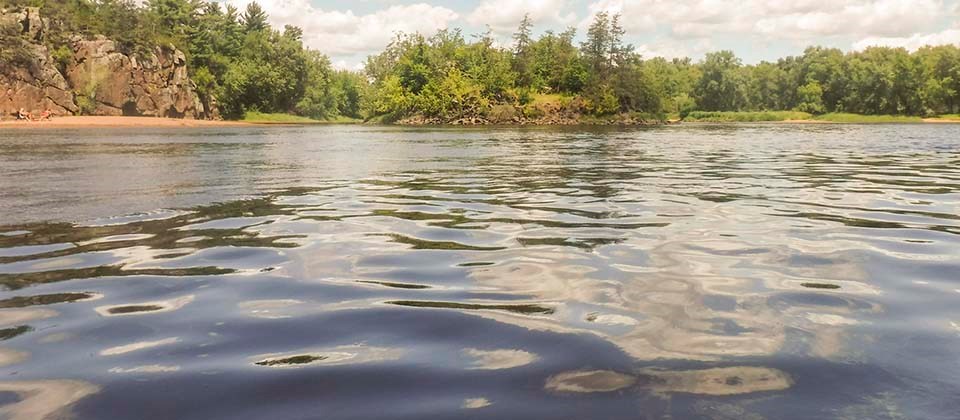
NPS/Konopacz High water quality is key to the health of the Riverway. This was an important contributing factor for the Riverway to be designated as a wild and scenic river and a national park. Many sections of the St. Croix and Namekagon rivers have also received the distinction of “Outstanding Resource Waters” in both Wisconsin and Minnesota. A Fragile PlaceThe Riverway, especially as part of a larger watershed, is a fragile place. Non-native species such as zebra mussels and invasive carp, expanding urban development, water and air pollutants, and climate change are impacting the Riverway. For example, you might see blue-green algae along the water in the summer. This is caused by increased nutrients, including phosphorus, going into the water.
Protecting the RiverwayTo protect the Riverway, a watershed approach is required. The National Park Service is part of the St. Croix Basin Water Resources Planning Team, which includes the Minnesota Department of Natural Resources, Wisconsin Department of Natural Resources, Minnesota Pollution Control Agency, and local agencies and organizations. This team and the public are vital to protecting the river.
In 2006 Wisconsin and Minnesota signed an agreement to work toward a 20% reduction in phosphorus loading in the St. Croix River Basin, with the intent of restoring the level closer to what existed in the 1940s. Long-term trends show that phosphorus levels are decreasing.
Lake St. Croix, the stretch between Stillwater, MN and Prescott, WI, was listed as impaired for excess phosphorus in 2008. Further deterioration has not occurred, indicating the efforts to reduce phosphorus are successful. In November 2019, the Minnesota Pollution Control Agency (MPCA) proposed adding the stretch of river from Taylors Falls to the beginning of Lake St. Croix in Stillwater to the state impaired waters list. In 2015, MPCA developed new eutrophication (nutrient over-enrichment) standards for large non-wadeable rivers. Water quality monitoring with this new standard took place from 2017-2018 and found excess nutrients, specifically phosphorus and algae. |
Last updated: October 19, 2021
